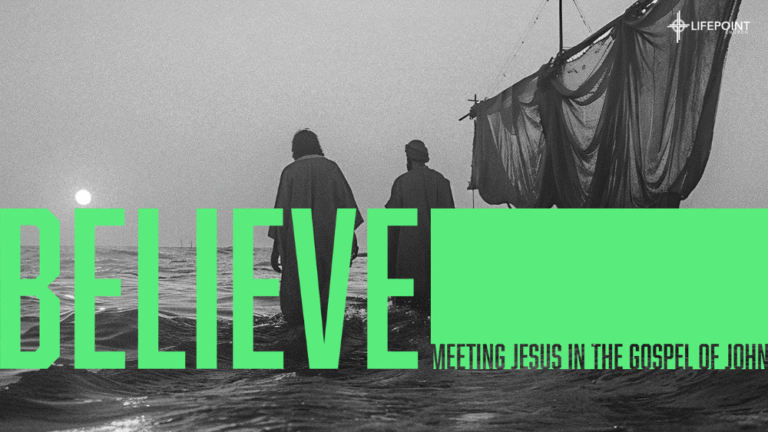John 9:1–41 · Jesus gives sight to the physically blind and exposes spiritual blindness.
Big Idea: Without Jesus we are blind. Jesus opens our eyes so we can see, believe, and worship.
Why this matters
John 9 is more than a healing story. It’s a mirror. The man receives physical sight and, more importantly, spiritual sight. The Pharisees keep perfect religious score—and remain blind. Jesus, the Light of the World, shows that the way to sight is not trying harder but trusting Him.
The story in five movements
1) The question of “Why?” (vv. 1–5)
Seeing a man blind from birth, the disciples assume a cause question: “Who sinned—this man or his parents?” Jesus answers with a purpose statement: “This happened so that the works of God might be displayed in him.” Suffering is not random; God can redeem it for His glory.
2) The sign that points to the Light (vv. 6–12)
Jesus makes mud, anoints the man’s eyes, and sends him to wash in Siloam (“Sent”). He obeys—and returns seeing. The miracle validates Jesus’ claim from 8:12: “I am the light of the world.”
3) The investigation and division (vv. 13–34)
Neighbors are confused; leaders interrogate. Because the healing happened on the Sabbath, some conclude Jesus “cannot be from God.” Others ask, “How can a sinner do such signs?” The parents confirm their son’s identity but won’t confess Christ for fear of being expelled. The healed man grows in courage: “Whether he is a sinner I do not know. One thing I do know, that though I was blind, now I see.” He’s thrown out—but he’s seeing more clearly by the minute.
4) The confession and worship (vv. 35–38)
Jesus finds him: “Do you believe in the Son of Man?” “Who is he, sir, that I may believe?” “You have seen him.” The man says, “Lord, I believe,” and worships Jesus. Sight leads to faith, and faith erupts in worship.
5) The verdict (vv. 39–41)
“I came… that those who do not see may see, and those who see may become blind.” Those who admit their blindness receive sight; those who insist “we see” remain guilty. Humility is the doorway to light.
How this lands for us
- Admit your blindness. We don’t need better lighting; we need new eyes. Begin with honest confession: “Lord, without you I’m blind.” (cf. Eph. 1:18)
- Trust and obey Jesus’ word. The man didn’t understand everything about Jesus—but he did the one thing Jesus asked (wash), and light followed. Take the next faithful step you already know.
- Tell a clear “one-thing-I-know” story. You may not have all the answers, but you do have a testimony: “I was ____, now in Christ I ____.” Keep it simple, honest, and Christ-centered.
- Worship openly. Sight leads to “Lord, I believe” and worship. Make Jesus the object of your gratitude all week—sing, pray, thank, and obey.
- Be “bothered” into love. Followers of Jesus are lovingly unsettled by the blindness around (and sometimes within) us. Pray, pursue, and point people to the Light of the World.
For groups & households
- Read John 9 together. Where do you see yourself in the story—the disciples, neighbors, parents, Pharisees, or the healed man?
- Discuss: What’s the difference between asking God for the cause of suffering and seeking His purpose in it? How does Jesus’ answer reshape your prayers?
- Practice your “one-thing-I-know.” In 2–3 sentences, share how Jesus has changed you. Keep it clear and Christ-focused.
- Pray for one person you love who is “walking in the dark.” Ask God for an opportunity to love and speak this week.
Memory verse
“One thing I do know, that though I was blind, now I see.” — John 9:25b
A simple prayer
Jesus, Light of the World, I confess my blindness. Open the eyes of my heart to see You, trust You, and worship You. Give me courage to tell what You’ve done and love those still in the dark. Amen.
Next step: If you’ve come to believe in Jesus, your next faithful step is to publicly identify with Him in baptism. We’d love to talk.

